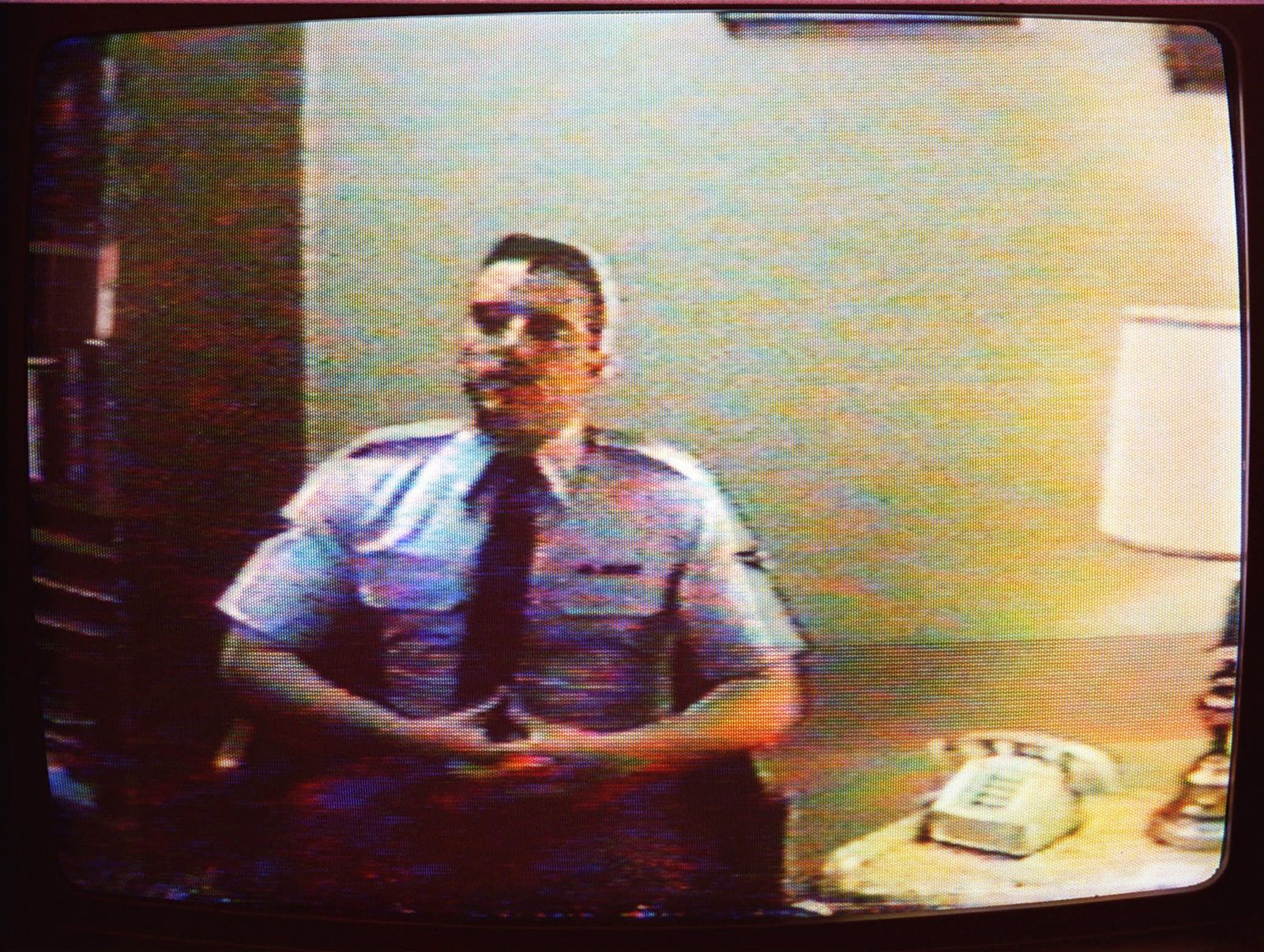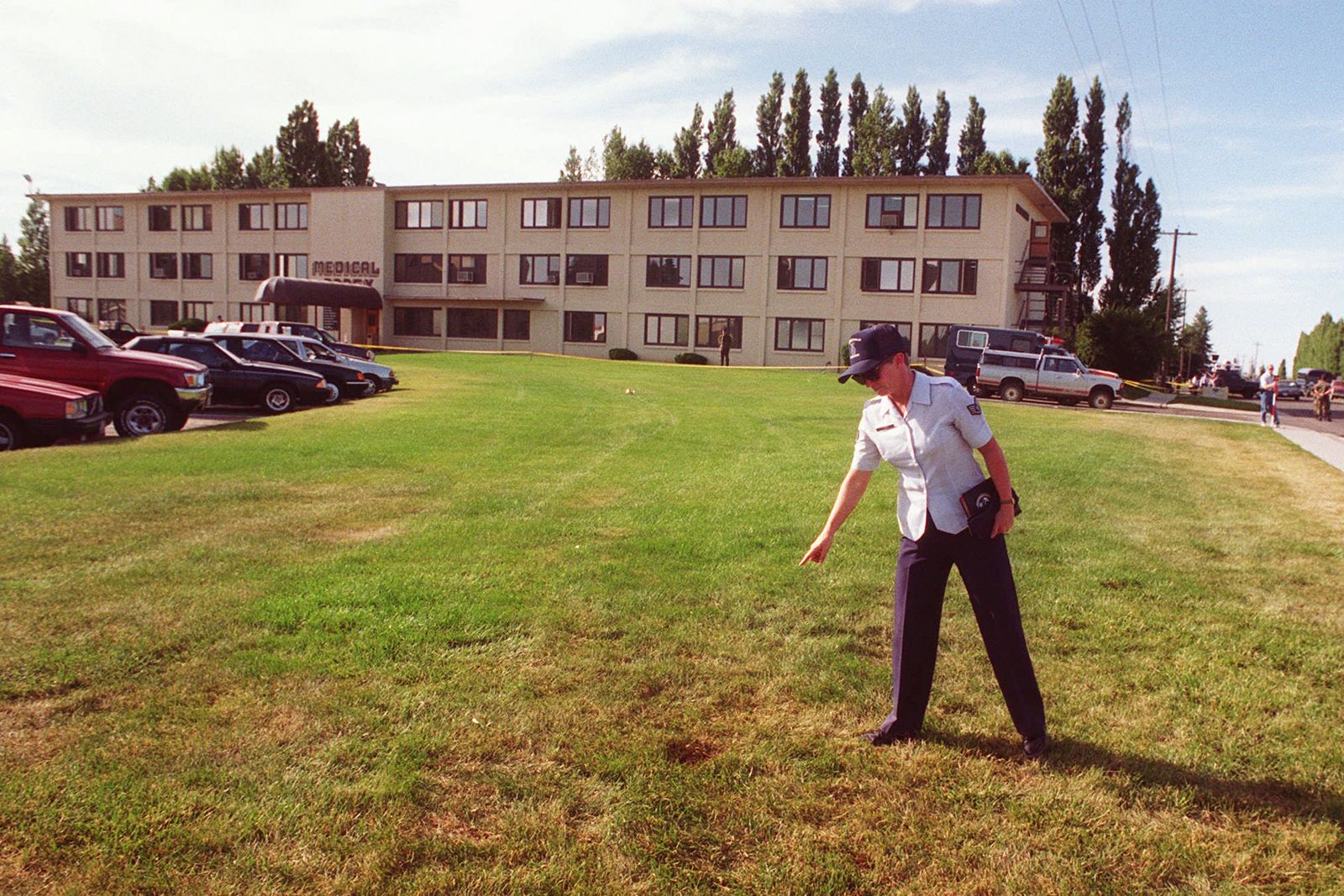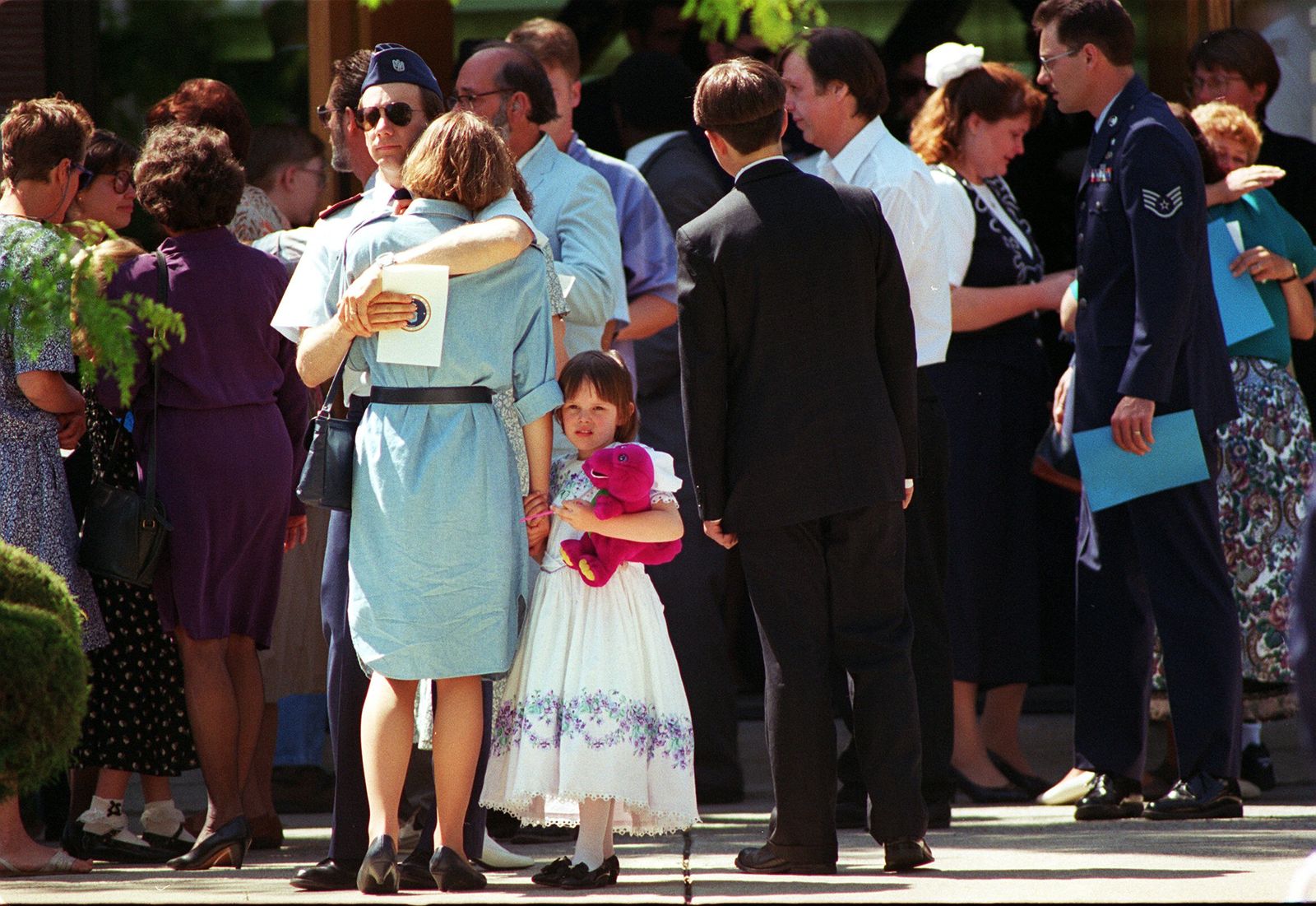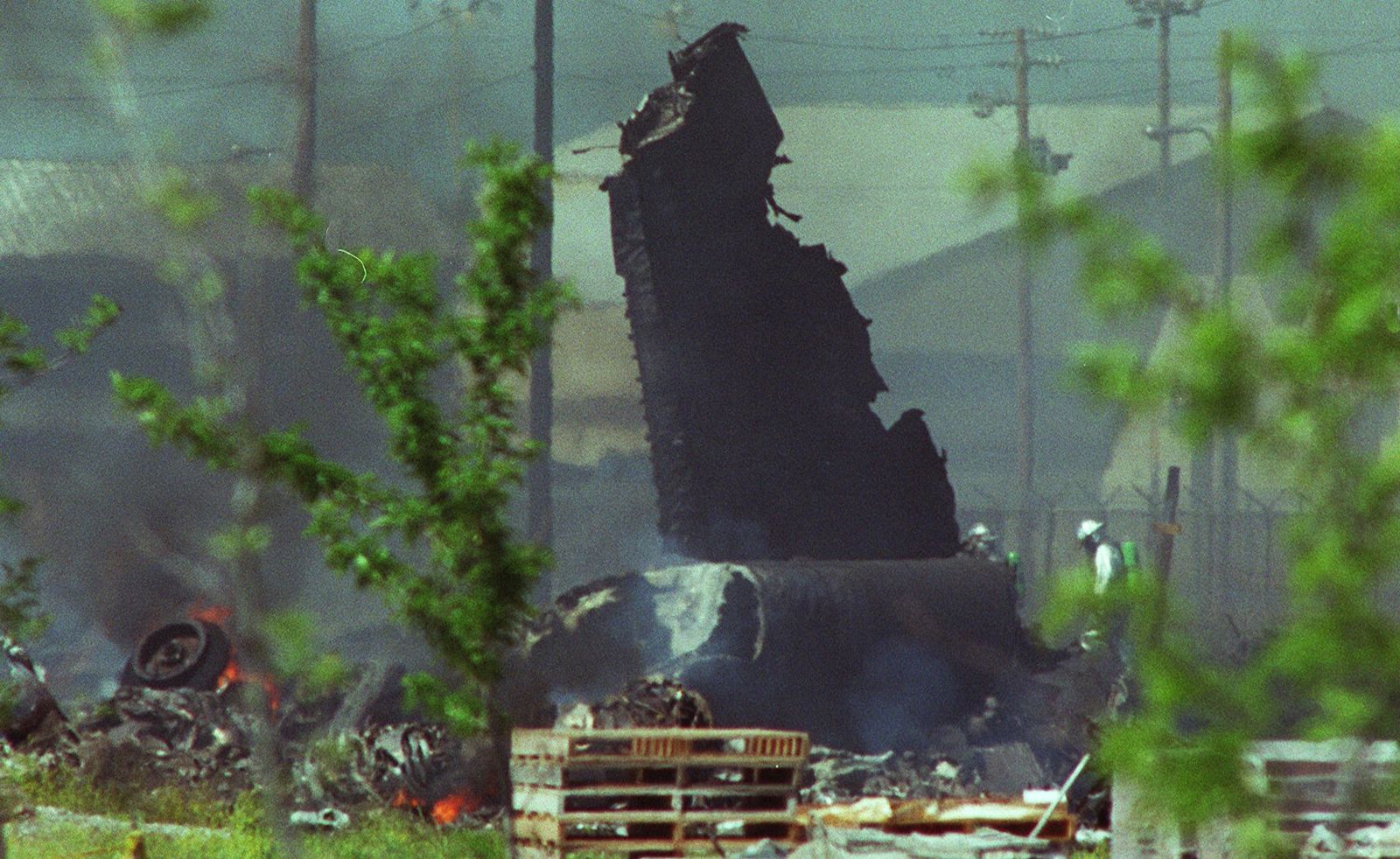
Worst week: Fairchild Air Force Base
Twenty years ago this month people at Fairchild Air Force Base and nearby Spokane were recovering from shock, dealing with grief and wondering "what next?" On June 20, a former airman recently discharged for erratic behavior had killed four and wounded 22 at the base hospital before he was shot dead. Four days later, with most of the wounded in hospitals and the base holding funeral services for two of the shooting victims, Fairchild's last B-52 tilted at a sharp angle and slipped from the sky while practicing for an airshow, killing all four onboard as it was engulfed in a ball of fire.
Section:Picture story
June 20, 1994
Jim Camden The Spokesman-Review

This screen grab of a video shows Dean Mellberg’s meeting with Dr. Paul Campbell in San Antonio, Texas, in the winter of 1993. Campbell diagnosed Mellberg with autism.
U.S. Air Force photo

Residents flee a Fairchild Air Force Base housing compound as police evacuate the area, Monday, June 20, 1994, during the shootings.
Dan Pelle The Spokesman-Review

Children flee the Fairchild housing compound as police evacuate the area on Monday, June 20, 1994.
Dan Pelle The Spokesman-Review

An Air Force security officer turns back residents from the housing area inside Fairchild Air Force Base on June 20, 1994.
Dan Pelle The Spokesman-Review

Emergency medical crews move a shooting victim from an ambulance to a helicopter on June 20, 1994, after the shooting spree.
Dennis House Associated Press

An injured man is prepared for helicopter transport to a hospital at Fairchild Air Force Base on June 20, 1994.
Dan Pelle The Spokesman-Review

Emergency workers prepare to transport Sam Spencer, who was shot inside the Fairchild Air Force Base hospital on June 20, 1994.
Dan Pelle The Spokesman-Review

A few days after Dean Mellberg’s shooting spree, Staff Sgt. Sue Conard points out the bloody spot in the grass where Mellberg fell after he was shot dead outside the hospital annex at Fairchild Air Force Base.
File The Spokesman-Review

An Air Force security guard stands outside the Fairchild Air Force Base hospital annex Tuesday, June 21, 1994.
Barry Sweet Associated Press

Hundreds of mourners pour out of the Fairchild Air Force Base chapel on June 24, 1994, after services for the victims of gunman Dean Mellberg. Major Thomas Brigham, Capt. Alan London, Anita Lidner and Christin McCarron were eulogized during the 45-minute service.
File The Spokesman-Review

Caroline Brigham, 9, and Billy Brigham, daughter and brother of slain psychiatrist Maj. Thomas Brigham, share a quiet moment after the memorial for the victims of gunman Dean Mellberg on June 24. Billy Brigham eulogized his brother at the service.
File The Spokesman-Review

In 2010, Andy Brown visits the Fairchild Air Force Base memorial dedicated to the victims of the Dean Mellberg shooting and the B-52 bomber crew that crashed on base four days later. Brown, an Air Force security policeman at the time of the shootings, shot and killed Mellberg to end the rampage at Fairchild Air Force Base.
Colin Mulvany The Spokesman-Review
June 24, 1994
Jim Camden The Spokesman-Review

An Air Force B-52 jet is seen an instant before it crashes in flames on June 24, 1994, at Fairchild Air Force Base, killing all four airmen aboard. The plane was practicing maneuvers for an air show.
CBS News Associated Press

The B-52 was in a steep bank when it corkscrewed to the ground and exploded in a fireball.
CBS News Associated Press

A portion of the tail section stands over the wreckage of a B-52 that crashed on June 24, 1994 at Fairchild Air Force Base.
File The Spokesman-Review

The tail section stands as a solemn reminder of the crash on June 24, 1994.
File The Spokesman-Review

A Fairchild Air Force policeman stands guard over the wreckage of the B-52 on Friday night, June 24, 1994.
Colin Mulvany The Spokesman-Review
Share on Social Media